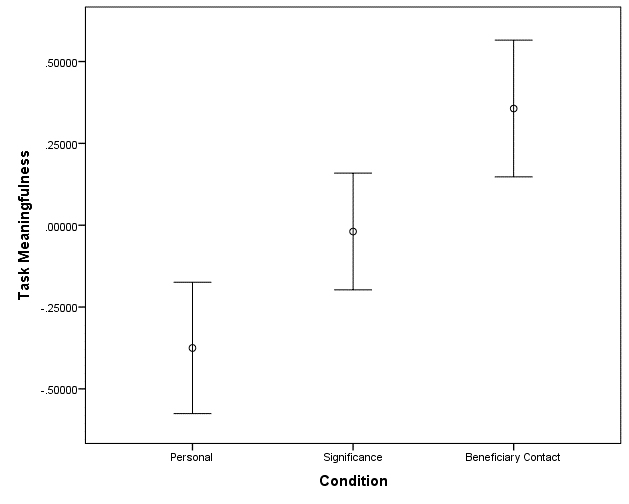
By Keith Reynold Jennings, {grow} Contributing Columnist
Workers are leaving their jobs in droves.
PricewaterhouseCooper’s (PwC) latest U.S. Pulse Survey reports that 65 percent of American workers are looking for a new job.
That’s two-thirds of the U.S. workforce!
Add to that the fact that businesses around the world are experiencing labor shortages. Latin America and the Caribbean face a tough recovery in employment. The UK is facing shortages as the new post-Brexit rules force EU nationals to reconsider where they want to live and work.
The National Association of Colleges and Employers reported that the Class of 2020 is entering the job market with record high starting salaries.
It’s a great time for job seekers. It’s a tough time for employers.
In this post, let’s dig deeper into what this means for businesses and brands.
Employees Want More Money, Movement, and Meaning
Eighty-eight percent of U.S. executives said they are seeing higher than normal turnover.
In PwC’s report, the top four reasons employees are looking for a new job include:
- Compensation
- Benefits
- Career Advancement
- Flexibility
This is not surprising to me. When someone is given the opportunity to improve their income, medical care, job responsibilities, and working conditions, they take it.
Plus, I don’t think these four reasons for leaving a job for a new one are specific to the U.S.
However, I don’t think this is the whole story.
Sure, people want more pay, promotions, and autonomy. But they also want to do work that’s meaningful.
A 2018 Harvard Business Review study that caught my attention revealed that nine out of 10 workers say they would take a pay cut to do more meaningful work.
Now, this assumes a worker’s basic needs are met. But this tells me that in the absence of a job with meaning and purpose, workers prioritize compensation and autonomy (the outcome). However, when a job provides meaning and purpose, workers prioritize the work (the output).
We see this psychological dynamic at work in marketing every day.
When stuck choosing between commoditized products and services that lack meaning and value, consumers prioritize cost and convenience. But when offered a product or service that offers meaning, purpose and a sense of identity, consumers are willing to pay a premium in time, money, and effort.
Meaning matters a lot when it comes to employee satisfaction, engagement, and retention.
The Three Ingredients of Meaningful Work
If you were to ask 10 people to define “meaningful work,” you would get 15 definitions. (Sounds a lot like defining marketing!)
I wanted to understand how psychologists and other researchers define it.
Naturally, people run the spectrum of what inspires and motivates them, but the science community generally defines “meaningful work” as work that is “important, worthwhile, and valuable.”
Purdue University’s Blake A. Allan, PhD cites Martela & Pessi, 2018, May, Gibson, & Harter, 2004, and Pratt & Ashforth, 2003 as sources for this definition.
Through studies and experiments, Allan and his colleagues found that “important, worthwhile, and valuable” nets down to doing work that benefits others. When they asked American workers to explain what made their work meaningful, they said, “helping others” and “contributing to the greater good.”
According to Allan, “These results suggested that helping others is a central driver of meaningful work….”
Let’s dig deeper into this.
How to Increase Meaning in Work
In 1666, the Great Fire of London destroyed St. Paul’s Cathedral. The renowned architect, Sir Christopher Wren, was officially given the assignment to rebuild the great church.
An old parable says that one day Wren was observing bricklayers at work.
He stopped and asked a few of the workers about what they were doing.
The first said, “I’m a bricklayer. I’m laying bricks to feed my family.”
The second said, “I’m a builder. I’m building a wall.”
The third said, “I’m a cathedral builder. I’m building a church for The Almighty.”
Three workers. One job. Three very different levels of meaning and purpose.
What Allan’s research reveals is that meaningful work can be increased, when work tasks are targeted, and a direct connection is made to its impact on others.
In one experiment, participants were asked to type two capital letters as many times as they could in five minutes. The more characters they typed, the more money they earned.
- The first group got to keep the money they earned (what Allan calls a “personal condition”).
- The second group donated the money to the American Red Cross (a “significance condition”).
- The third group donated the money to the Red Cross, as well, but before they began their task, they watched a video story of someone helped by the Red Cross after his house burned (a “beneficiary contact condition”).
Those who kept the money (Group 1) reported less task meaningfulness. Those who watched the video, then completed the task, reported the highest task meaningfulness. Why? Group 3 saw how the task they were doing was helping others.

Allan, B. (2018, July). Important, worthwhile and valuable employment. Psychological Science Agenda.
This is what that old parable of the bricklayers so eloquently teaches us.
The first two bricklayers were working for themselves (personal condition). The third one was working for something greater than himself (beneficiary contact condition). He could see the direct connection between bricklaying and serving God and others.
Meaning and Jobs as a Competitive Advantage
Which brings us back to where we started.
Many people are looking for new jobs. This migration is impacting CMOs ability to deliver consistent customer experiences. And its impacting CHROs ability to retain talent.
Some are looking for a new job because they have student debts and other financial obligations to meet (personal condition).
Others are looking for a new job because their work lacks meaning. They can’t see the connection between the tasks they’re doing and how it benefits people and the planet (beneficiary contact condition).
Our job as employers, leaders, and marketers is to help those we serve connect their work to how it helps others. We can do this with our clients, as well.
Each month, my company produces a video for our associates that tells the story of a nonprofit we support through volunteerism and/or funding. We make it a point to say that simply by doing their jobs, our associates are helping support nonprofits like the one featured around the world. And I always invite them to contact me if they want to get involved in the community.
My hope is that the people who choose to work with us don’t have a need to look for another job, because they see how their work is benefiting others. Which gives us a competitive advantage. Which hopefully drives our growth and profitability. Which ultimately drives our corporate generosity and community impact. Which produces a cumulative advantage.
What about you?
As a marketing professional and storyteller, how are you helping those you serve connect the dots between the tasks needing done and the impact it can have on others?
 Keith Reynold Jennings serves as vice president of community impact for Jackson Healthcare. He writes and speaks about values, impact, and generosity in business. Connect with Keith via LinkedIn and his monthly newsletter.
Keith Reynold Jennings serves as vice president of community impact for Jackson Healthcare. He writes and speaks about values, impact, and generosity in business. Connect with Keith via LinkedIn and his monthly newsletter.


